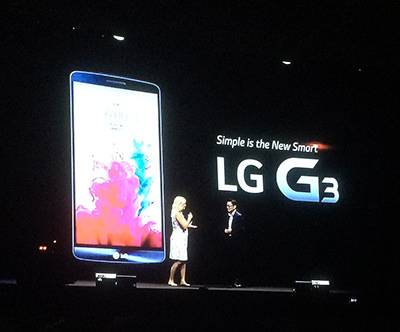
On Tuesday at a London press conference, LG officially announced its highly anticipated, incredibly leaky new flagship smartphone, the G3.
Whether that’s good news or bad news depends on your point of view. Owners of the company’s previous generation smartphone, the G2, might be miffed that their device just became old hat in less than a year. Everyone else, however, has a sleek-looking new phone to ponder.
I didn’t count the number of times the company used the word “simplicity” in its presentation, but it was a lot. The company didn’t hype up the phone’s beefy technical specs, including quad-core Snapdragon 801 processor, up to 3GB of RAM, 32GB of storage, and expandability via microSD card slot. Instead, it focused on features and how people would benefit from LG’s take on simplicity.
Topping the list are these 10 facts about the new G3.
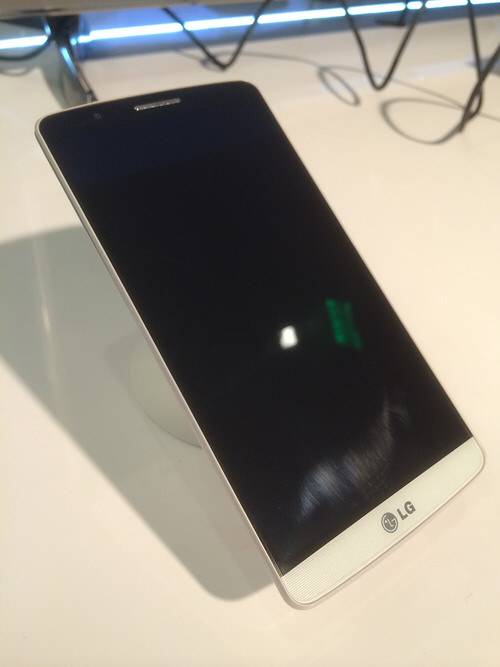
1. The G3 feels good in the hand
“When you hold G3, it feels perfect in your hand, because there’s no button on the sides,” said Ramchan Woo, head of smartphone planning for LG. The design ethos was to offer modern minimalism without ostentation. As pretentious as that sounds, the company may have just succeeded.
Like its predecessor, the device relocates the wake/sleep button and volume rocker on the back of the phone. And the whole gadget felt fairly comfortable in my hand—which is saying something, because I have really small hands. The reason for that is the curvature of the back, as well as the “metallic skin”—which really isn’t metal at all, but plastic made to look like brushed metal.
I asked a LG rep about the design choices, and apparently the company wanted to offer the sophisticated look of metal without the extra weight.
2. The device offers a beautiful 5.5-inch Quad HD IPS display
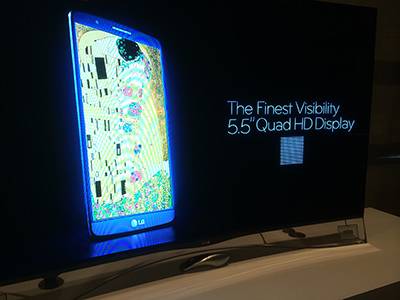
The “quad” part of this spec refers to a quadrupling of the standard 720p HD screen’s pixel resolution. LG has some expertise in displays, and it figured out how to shrink the pixels down (by as much 44 percent, the company claimed) to pack more into the space. End result: A great-looking, high-definition screen (at 2,560 x 1,440 resolution) that packs 538 pixels per inch.
The display measures 5.5 inches, which means we’re in phablet territory. But, while its overall dimensions (146.3mm x 74.6mm x 8.9mm) are still bigger than the G2, it somehow manages to fit fine in a one-handed grip. Basically, the company minimized the bezel around the display so it could cram in a big screen without super-sizing the whole phone. Indeed, the entire front face is almost all screen.
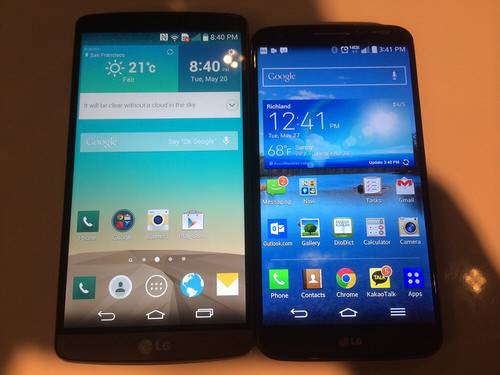
3. The phone was optimized for battery life
HD displays can use a lot of power, so something that multiplies that by four should result in a massive loss of juice. Knowing that, the company paid attention to battery optimization. Like the G2, this version includes a 3000 mAh battery, and it also features optimizations so that the display performance won’t zap the battery dry. Speaking of the battery, LG bowed to user feedback and has now made it removable.
4. LG revamped the cameras: The front for quality, the rear for speed
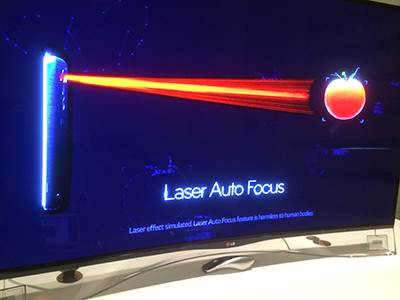
LG claims to have improved the speed of its 13 megapixel camera so that people don’t miss important moments on the fly. Toward that end, the company integrated a laser auto-focus that zeros in as fast as 276 milliseconds. These are more common in DSLRs than smartphones, but if it works as described, it should make snapping images very quick indeed. Along for the ride is an improved OIS (optical image stabilization) feature and a new camera trigger that auto-focuses and snaps the shutter with a single tap of the screen.
On the 2.1 megapixel front camera, the company wanted to enhance selfies, so it enlarged the image sensors and put in more of them. The selfie cam also does an interesting trick now: If you raise your hand, the action can set off the shutter (on a time delay) to take your pic.
5. The Smart Keyboard lets you adjust the keys
The Smart Keyboard lets users customize the height of the keys, to appeal to people whether they have delicate texting tappers or big sausage fingers. There’s also predictive text input—just swipe up on the keyboard to select the suggestion—and the ability to move the cursor by swiping along the space bar, instead of lifting the fingers up and over the screen. Frequently used symbols can also be placed at the bottom of the keyboard.
6. LG tweaked the interface with flatter design, more subdued colors and circles
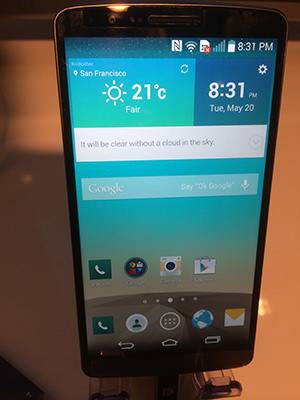
Like so many smartphone graphics, this one also uses a flat, simplistic design. But to differentiate itself, it also used a less common graphical feature: circular folders and icon shapes. It’s interesting how a simple little change can make the grid feel less boxy and more fluid. The company also eschewed primary, carnival colors for a more sophisticated pallet and implemented a judicious use of animated motion effects.
7. The G3 can tell you what you need before you ask
Thanks to what it calls “Smart Notice,” people can get various cards that notify them of things before they need it. This isn’t really new these days—Google Now does a pretty good job of offering information, like weather, directions or traffic—so really, a lot depends on execution.
LG claims that Smart Notice can remind you of tasks you’ve put off—like responding back to someone who called when you were busy—or releasing processes to optimize your memory or battery life when you don’t need it. (The underlying Android operating system already does something like this, although LG has apparently tweaked those functions.) The company calls the latter “smart cleaning,” and as long as the recommendations don’t become annoying or intrusive, I could see that being really handy.
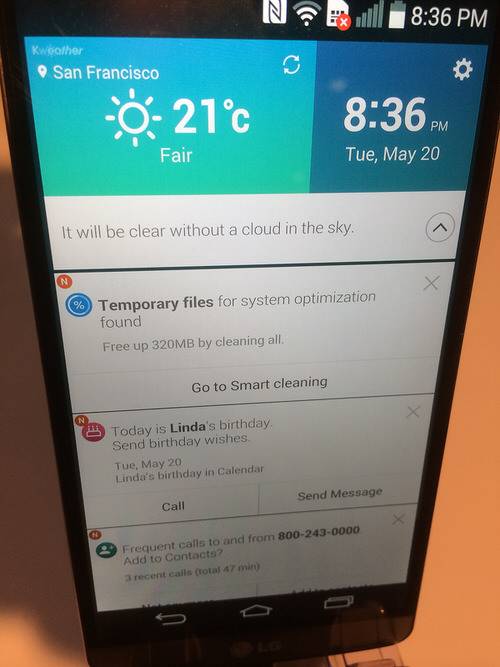
8. You can Knock for security.
The G2’s knock-to-wake feature proved popular, so the G3 took that and expanded on it with “Knock Code” security.
Essentially, the feature does away with pin codes, fingerprint or pattern unlock by letting users tap the device to unlock it. I wondered if somehow accidental access could be a problem—like keys in your pocket hitting the device. But the user sets a pattern, and then can unlock the phone by tapping that physical pattern anywhere on the screen. According to LG, there are more than 80,000 security combinations. Not sure that this will be a big improvement over typical pattern or fingerprint unlocking, or pin codes, but hey—at least it’s different.
Beyond that, LG also offers a “content lock” so users can sync to their desktops or let others make phone calls while also keeping their data locked down. To be honest, I’m a little baffled about the problem this feature is supposedly solving. Much more practical, at least for me, is the new kill switch—LG’s beefed-up variation of Android Device Manager. The feature allows users to remote wipe or remote lock their phone … or even completely brick it if they want, which ADM won’t do.
9. The G3 has an entourage
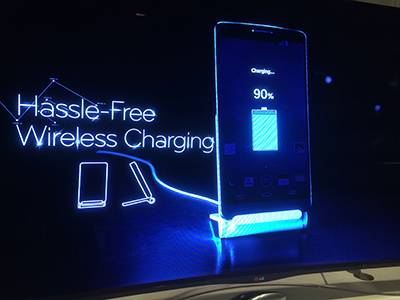
The new phone, which will be available this summer in the U.S., will work with a group of companion products, including the Quick circle case, a wireless charger—which works, even with the Quick circle case on—and the Tone Infinim wireless Bluetooth headset. In addition to accessories, people will also be able to answer calls on their G Pad tablets or G Watch Android Wear smartwatch.
10. It will be available practically everywhere
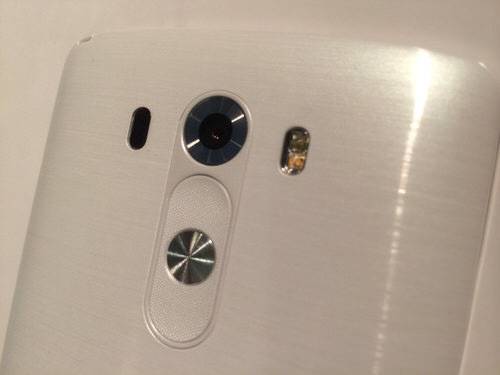
LG’s G3 goes on sale in South Korea today, and will come to the U.S. later this summer, likely in the latter part of June. When it lands, it will come to all the major carriers—Verizon, AT&T, T-Mobile and Sprint—as well as Best Buy and its mobile specialty stores. No specific launch date or pricing was announced, but it will be available in metallic black, white, gold, “moon violet” and burgundy red when it does debut.
Color range image courtesy of LG; all others by Adriana Lee for ReadWrite




















